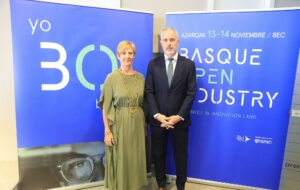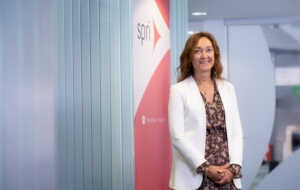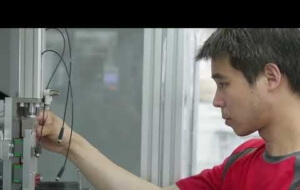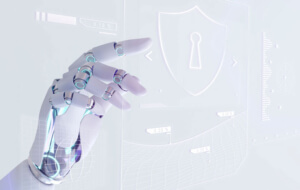

The “Zero Defect Manufacturing” Cell is one of the assets incorporated into the BDIH at the Flexible and Collaborative Robotics node. It is the property of CEIT, a technology centre whose main task is to carry out industrial research projects in close collaboration with the R&D departments of companies.
This asset consists of a flexible cell in which different technologies can be tested, all of them oriented to product inspection, such as metrology and structural integrity using 2D and 3D optical techniques or inspection by non-destructive testing (NDT) analysing magnetic properties. Additionally, allows programming, incorporation and adaptation of automation and robotics to the inspection and measurement process.
Using artificial vision techniques and NDT is possible to analyze the data of the dimensions and structural integrity of the produced parts and it also allows in-line inspection of the parts, ensuring the concept of zero-defects and in this way reducing rejection and increasing productivity.
This cell has the ability to test and incorporate industrial robots and automation to provide inspection with the necessary flexibility, For this purpose, it has 2 Fanucs robots of different dimensions and capacities. For inspection, telecentric optics are available in different sizes, for high-precision 2D inspection and several laser scanners for 3D metrology. As for the NDT, it consists of several proprietary systems for measuring magnetic properties for the detection of grinding burns and the creation of a hardness map of the product.
The demands of the different types of inspection require tasks where contact force control is required (inspection with non-destructive sensors requires precise probing) in addition to the classic approach to traditional precision-positioning robotics (dimensional inspection). In anticipation, these robots have force sensors that allow us to see what effort the robot is making in the event of a contact with the surface.
This asset, which we present within the BDIH Robotics Month, makes available to companies a flexible cell with the ability to characterize a product, it has two important benefits: the first, the generation of a detailed report of the product, including metrological levels, defects, hardness map; secondly, it enables the testing and validation of technologies in which the customer may be interested, as this cell is versatile enough to test different configurations and study the viability of a specific technology. This versatility feature allows the process to be configured with the required stations, as well as the technology to be used in each station.
 19 September, 2024 Digitalisation
19 September, 2024 Digitalisation 27 September, 2023 Digitalisation
27 September, 2023 Digitalisation 5 October, 2021 Digitalisation
5 October, 2021 Digitalisation 1 October, 2021 Digitalisation
1 October, 2021 Digitalisation 30 September, 2021 Digitalisation
30 September, 2021 DigitalisationFor SMEs, for diversifying markets, internships abroad, international tenders, non-reimbursable subsidies to consolidate exports, subsidies for deployments or specific training in internationalisation.
You’re interested, right?